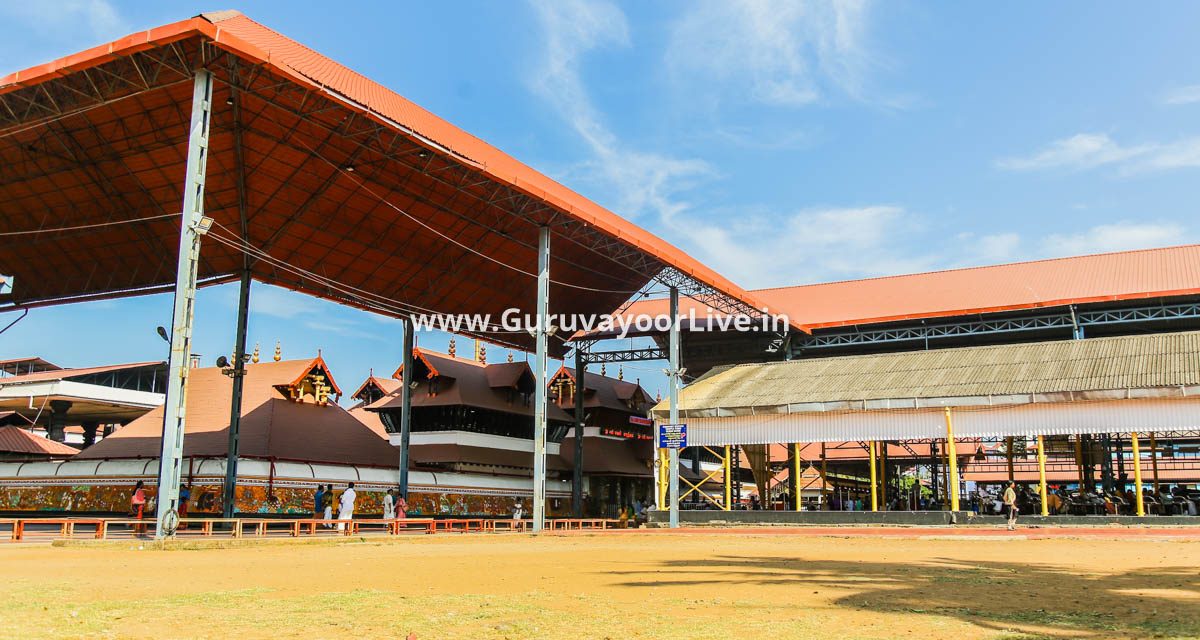

Construction of Guruvayur Temple
Before the conclusion of his incarnation as Krishna, the Lord told his devotee and minister Uddhava that his image would come floating in the sea which would soon engulf Dwaraka. Uddhava was to request Brahaspati, the Guru of the Gods, to install the image at a suitable place. When this came to pass, Brahaspati and Vayu, the God of wind, set out in search of a sacred place to house the murti. They met Parasurama (an earlier avatara of Vishnu) at Kerala, who was bringing the same murti to Dwaraka. Parasurama led them to a beautiful lake full of lotus flowers. Lord Shiva was doing penance there and he told Guru and Vayu to install the two murti together at a spot near the lake and that the site should be known as “Guruvayoopura”. Lord Shiva and the goddess Parvati left for Mammiyur, on the opposite bank of the lake. The present tank, “Rudratirtha”, is only a miniature of the original lake. When devotees go round the Krishna temple, from a certain spot, they face Mammiyur and pray to Shiva. Vishwakarma, the architect of the Gods, built the Krishna temple at the request of Guru and Vayu. This is the account in the Mahabharatha, told by the sage Dattatreya to King Janamejaya, son of Parikshit. An astrologer told a Pandya King that he was destined to die from a cobra bite on a particular day. He was advised to go and pray before Guruvayurappan. The king spent years in meditation and prayer at the feet of the deity. Suddenly the King realized that the time of his death had passed. He came back to his palace and asked the astrologer why the prediction was wrong. The wise man showed him the mark on his left foot where the cobra had bitten him. Since the king was wholly absorbed in the Lord, Who alone can dispense with fate, he did not feel the sting. In gratitude, the King built the Guruvayoorappan Temple and set apart funds for the daily routine of the temple. Most of the current temple building dates to the 16th and 17th centuries, although rich devotees funded extensions and additions later. The deepastamba (column of lights) was erected in 1836 by a devotee from Thiruvanathapuram. The temple has gopurams in the east and the west. The eastern gopuram has an inscription which refers to the town as “Gurupavanapura”. The western gopura was built in 1747. Guruvayoor which is a bustling pilgrim town, is also hailed as “Bhuloka Sri Vaikuntham” meaning ‘Heaven on Earth’, where the deity reveals Himself to His devotees in the same majestic form in which He welcomes them in “Vaikuntha”, His celestial abode. It has its own glory and greatness, mainly because of the divinity enshrined in the Sanctum – Sanctorum (central shrine) of the temple and the unique charm of the idol installed in it. Mahavishnu, the presiding deity in the Garbhagraha (central shrine) is worshipped according to the pooja routines laid down by Adi Sankaracharya and later written in to the Tantrasamuchaya by Chennas Narayanan Namboodiri (born in 1427). The Chennas Namboodiris are the hereditary Tantri of Guruvayoor temple.








